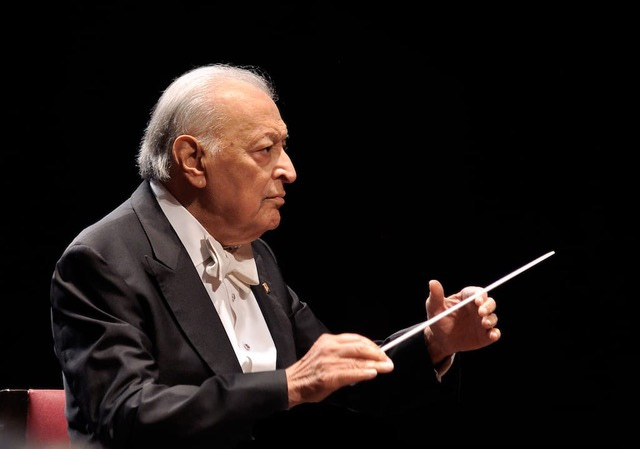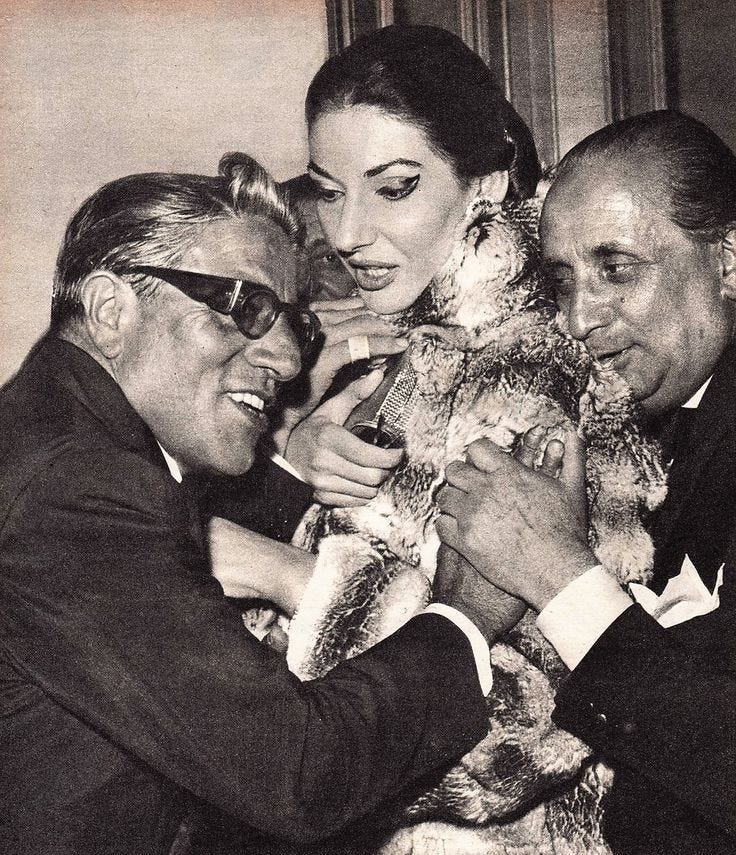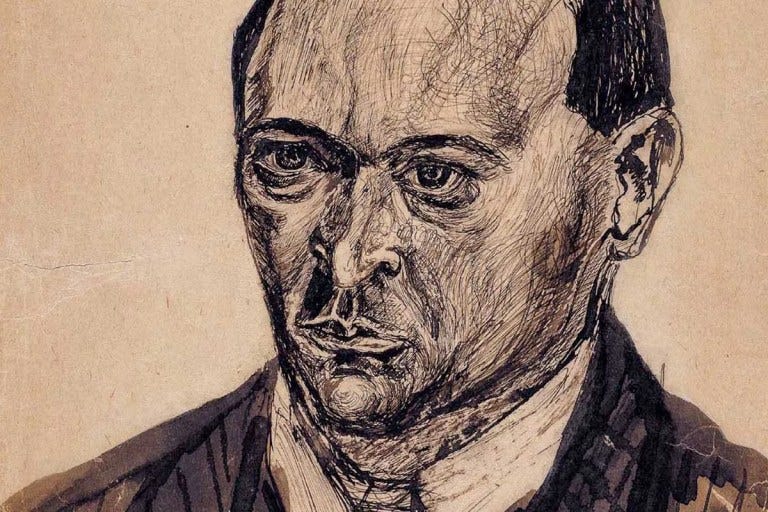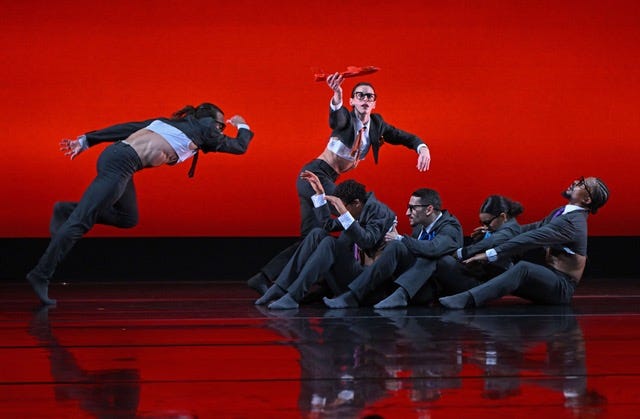By Donna Perlmutter
Schoenberg and Callas. Maria Callas, the inimitable singing actor and Arnold Schoenberg, the era-changing composer.
One doesn’t think of these two in the same breath. Each created a separate universe of revelation. But both experienced a common sorrow:
Schoenberg, that his system of writing music -- atonality -- went beyond harmonic familiarity and thus was rejected by audiences who favored the past era of plush Romantic works.
Callas, that her voice -- and therefore her unparalleled opera performances -- had come to an end far too early, in her 40s.
A bio-pic of her life, the last part of it, is current on Netflix. Once you’ve seen the actual Callas perform or heard her recordings, however, this film (Pablo Larrain’s “Maria”) with Angelina Jolie in the title role, will seem like what it is: a fever dream of anonymous divadom, an homage to the movie actor herself -- but certainly not a glimpse of La Divina.
For one thing, Jolie is so utterly fixated on her own beauty -- returning to endless close-ups, sitting often before mirrored dressing tables, all posed -- that she fails to observe even a vestige of the Callas look. No altering make-up, no attempt at her semblance. Oh, the glamour, yes, the costumes and high-style street-wear, yes. But no slight nod to facial likeness. Just a display of attire and hair-dos. The sheer effrontery.
A vanity show? Certainly. High-fashion magazine art framed as cinema? Of course. She modelS importantly, courtesy of her collaborators, in the ornate Louis IV Paris apartment, in grand pictorials and vistas against historic backgrounds in Europe and faraway pyramids.
In fact, it is those aspects that take dominance. You could see Jolie luxuriating in her own diva fantasy. She even took voice lessons, in preparation for the film, that resulted in several minutes onscreen of her own tech-aided (?) singing -- shown in full-face closeups. (I guess she can’t tell the difference between a Jolie and a Callas.)
Finally, a narrative emerges -- with the appearance of Greek shipping magnate Aristotle Onassis, her paramour. And it does reveal, as do all the Callas biographies, that wealthy, powerful older men were drawn to her as she was to them. They stood, for each other, as the very definition of trophy partners.
There’s even an invented scene with a JFK figure, the two sharing a drink, he and Callas testing each other in witty repartée, discussing his wife Jackie’s liaison with Onassis.
All this, yes. But the film never escapes Hollywood long enough to delve into the Callas magic -- the character and sound of her distinctive voice, the timbre that contained its very reservoir of expressive presence, its throbbing heartbeat of humanity, its open vein of a soul. Luckily, some, though not enough, of her recorded excerpts were included.
For Callas it was the tightrope of life in all its vocal dimensions that she telegraphed -- sometimes even with an under-par pitch or an elicited wobble.
“The voice is a weapon,” she once said, “an instrument to hit at core emotions.” Veritable music drama was the goal, not tonal beauty and technical acrobatics. Let the Renata Tebaldis and the Lily Ponses walk off with those prizes, although you could not call her a slouch in that department either.
But director Larrain chose to stay with the considerable story line -- a fat and homely, Greek-American child whose mother semi-pimped her out as a teen-ager to American and German soldiers in war-time Athens. Thereafter she boasted a huge musical talent and later shed 70 pounds to become an international star -- something far easier to follow in a movie, than the artistry that made Callas unique.
Also a treasured fillip are his footage clips of her 1973 Farewell Concert in London, showing a statuesque Callas of utmost poise and elegance at curtain calls, but not a whisper of put-on humility or queenly demeanor.
Still, he chose a title, “Maria,” that simply would be out-of-range for anyone with a vague idea of who the personage is. Bottom line, the world did not refer to her as anything but Callas. Do let there be Marias in every corner of it, Mr. Larrain, but own up: there’s only one Callas. Either that, or find a better title. Especially now that we know “I once met a girl named Maria.”
And let there be no doubt, there was only one Arnold Schoenberg -- the leader of contemporary music starting in the 30s -- who came to live right here in Los Angeles as a fugitive from Nazi-led Germany.
His pre-revolutionary extravaganza, “Gurrelieder” stood as an entry in the massive post-Romantic sweepstakes -- although it was his austerely engineered atonal works that he prized above all.
But those stayed in the shadow of Wagner’s epic operas, which seemed to inspire Schoenberg’s concert drama “Gurrelieder.” Nothing could have exasperated him more, he reported, than the wild applause at its 1913 Vienna premiere -- in contrast to the public’s “hatred”of his atonal compositions.
It was “Gurrelieder” that celebrated the 150th anniversary of the composer’s birth —with a massively enlarged LA Philharmonic, a cast of singers and full chorus like the one that Zubin Mehta led here many decades ago when the conductor was a young, virile, dark-haired maestro lunging at his players in hyper-physical style.

He repeated the performance last week -- this time, as a cane-aided, frail, gray maestro in charge of the proceedings, perched high on his stool, but with easy command.
At any rate, Wagner was not going to have anything on Schoenberg. This “Gurrelieder” has all the sweeping grandeur of a “Tristan und Isolde” and even comes close to the ephemeral love-death of that legendary pair.
It was Schoenberg’s one last fling -- a concert drama with sumptuous ravishments, an orchestral orgy, a testament to all that he chose to leave behind. And the Phil, nearly overflowing the stage (four harps, line-up of gleaming brass, other proportionately added instruments) played in burnished glory.
Especially alluring was soprano Christine Goerke as she sang of the sensual glories described by the Danish poet Jens Peter Jacobsen, her gleaming voice and interpretive savvy on mark. Tenor John Matthew Myers, made a healthy, ringing complement and as narrator Dietrich Henschel added his richly baritonal, animated flourishes. Grant Gershon’s Master Chorale poured out its usual nuanced and illustrious sound.
Our ever-ready local dance company, BodyTraffic, continues its residency at the Wallis and just showcased another new slant -- this one on pop classics -- putting it a step away from last season’s Black classic artists.
This time it’s all about Buddy Holly, Sinead O’Connor et al, and you can trust that taste, sophistication and whimsy are again combined to win the most finicky favor of dance-lovers. Also, it’s a safe bet that new style in decors, music and choreography each time is a given.
Bravo BodyTraffic!








It's extraordinarily unprofessional (and more than a bit misogynist) for a reviewer to take pot shots at an actress for decisions made by a director, cinematographer, makeup artists, and costumers. I can't for the life of me understand how anyone familiar with film production in 2025 could think that any actor has great influence on aesthetic decisions - unless that actor has a producing credit - which Jolie does not. I had issues with MARIA, but these were due to choices made by the writer and director. Jolie did great work with the sluggish material.
However, the GURRELIEDER review was spot on, though the LA Master Chorale deserved a few more words of praise for performing this difficult choral music with such clarity.
Then you should have raised Maria from the dead to play her real life because truth be told, things revolve and this was just a piece of art that Jolie tried her best to act out. That's why it's called a movie not reality show. Jolie was directed to act she is not the director herself. People will point mistakes even in hell, and say satan should wear high heels and steel dress code for the flames because hell is burning hot🥵.